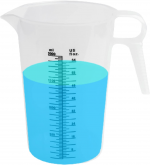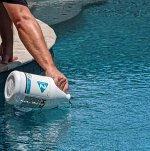Deb04
LifeTime Supporter
- Jul 12, 2008
- 779
- Pool Size
- 19000
- Surface
- Vinyl
- Chlorine
- Salt Water Generator
- SWG Type
- Pentair Intellichlor IC-40
I also use the lower strength stuff. I know it’s more expensive and I don’t care. I am usually all about saving money and saving plastic, but not here. I go through about a gallon a year so the difference in cost is not going to break me. On the other hand, the full strength stuff scares me too. Used it once. Never again. I live in an area of the country where wind can and does change direction at a moments notice. I breathed some in and my asthmatic lungs complained vigorously.
I‘ll just add my voice to “no glass at the pool.“
I‘ll just add my voice to “no glass at the pool.“



